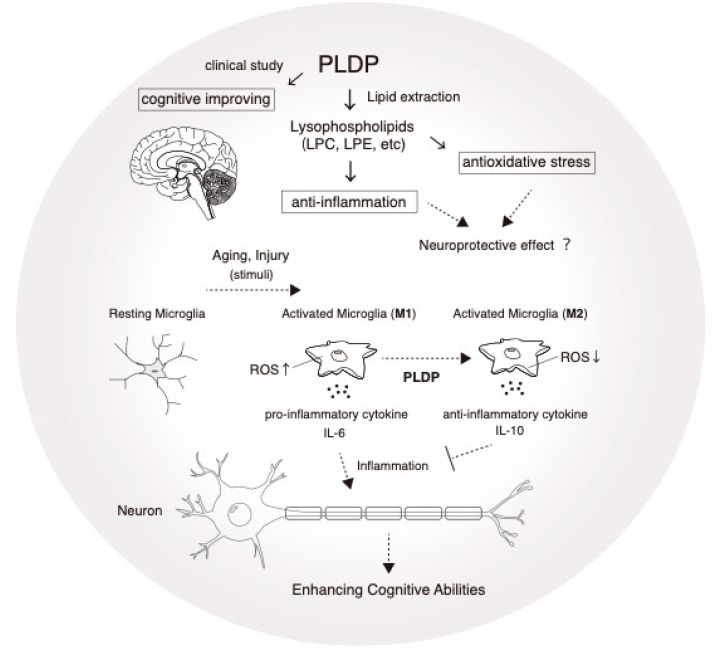Figure 1.
A potential role in the mechanism of action of PLDP in microglial cells. Our previous study suggested that PLDP improve cognitive function at older ages [29], by acting as a rich source of lysophospholipids (LPLs). Total phospholipids were extracted from PLDP using the Bligh and Dyer method, an analysis of the composition of total phospholipids from PLDP revealed that the most abundant LPLs was LPC and LPE. We measured LPS-mediated anti-inflammatoly cytokines expression and ROS production with or without PLDP-derived LPLs treatment, IL-6 expression and ROS production was decreased.Conversion to the activated microglial phenotype (M1 and M2) is often accompanied by the release of NO and reactive oxygen species (ROS), along with the production of inflammatory cytokines such as IL-1, IL-6, and tumor necrosis factors (TNFs). This inflammatory milieu creates a toxic environment that leads to neuronal dysfunction and death. PLDP is a rich source of lysophospholipids including lysophosphatidylcholine (LPC) and lysophosphatidylethanolamine (LPE). In contrast, anti-inflammatory cytokines such as IL-10 and IL-4 induce the M2 phenotype, which possesses neuroprotective properties. We identified novel cooperative actions of lysophospholipids resulting in inhibition of IL-6 secretion and intracellular ROS accumulation in microglia after LPS-induced neuroinflammation. PLDP represents a promising nutraceutical that could improve cognitive function.

